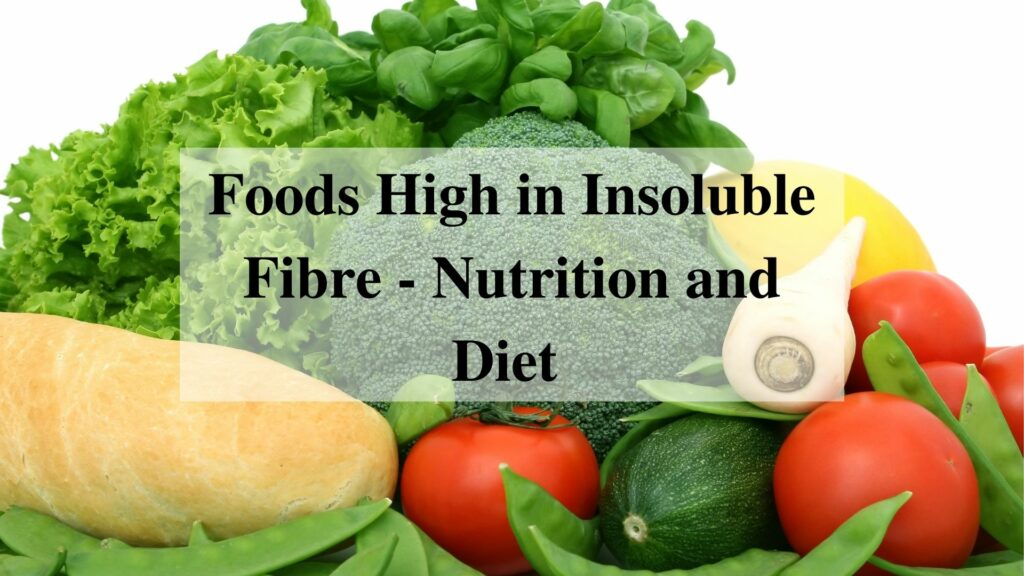What foods are high in insoluble fibre? That is the question that many people ask themselves when they are trying to figure out how to get more insoluble fibre into their diet. Insoluble fibres cannot be broken down by your body, which means that they serve no nutritional value; however, foods high in insoluble fibre can help improve digestion and reduce constipation. This article provides information on foods with the highest levels of insoluble fibre so you can add them to your diet!
Contents
- 0.1 What are Insoluble Fibres?
- 0.2 More About Foods High in Insoluble Fibre
- 0.3 Fast Facts on Soluble and Insoluble Fibre:
- 1 Benefits of Foods in High Insoluble Fibre
- 2 How Foods High in Insoluble Fibre Work
- 3 Picking Foods High In Insoluble Fibre
- 4 How Many Foods High In Insoluble Fibre Do You Need
- 5 Conclusion
What are Insoluble Fibres?
The term fibre refers to the portion of plant-based foods that are indigestible or absorbed by the body’s organs. Unlike simple carbohydrates, such as bread and sugars, fibre is a more complex carbohydrate that does not spike blood sugar levels.
Vegetables, fruits, whole grains, and legumes are all good sources of fibre. It’s also known as bulk or roughage. It’s a necessary element in the diet since it is a requirement for digestion.
A distinction is made between soluble and insoluble fibre. Soluble fibre dissolves in water, whereas insoluble fibre does not dissolve.
- Soluble fibre. This form of fibre dissolves in water to create a gel-like substance. It may aid in the reduction of blood cholesterol and sugar levels. Oats, peas, beans, apples, citrus fruits, carrots, barley, and psyllium are all good sources of soluble fibre.
- Insoluble fibre does not dissolve in water and so it passes through your digestive system uninterrupted. It helps to increase stool size and movement, which can be beneficial to people with constipation or abnormal stools. Nuts, beans, vegetables like cauliflower and green beans, and whole-wheat flour are excellent sources of insoluble fibre.
In addition, the ratio of soluble and insoluble fibre varies across different plant meals. Consume a wide selection of high-fibre foods to get the most health advantages.
More About Foods High in Insoluble Fibre
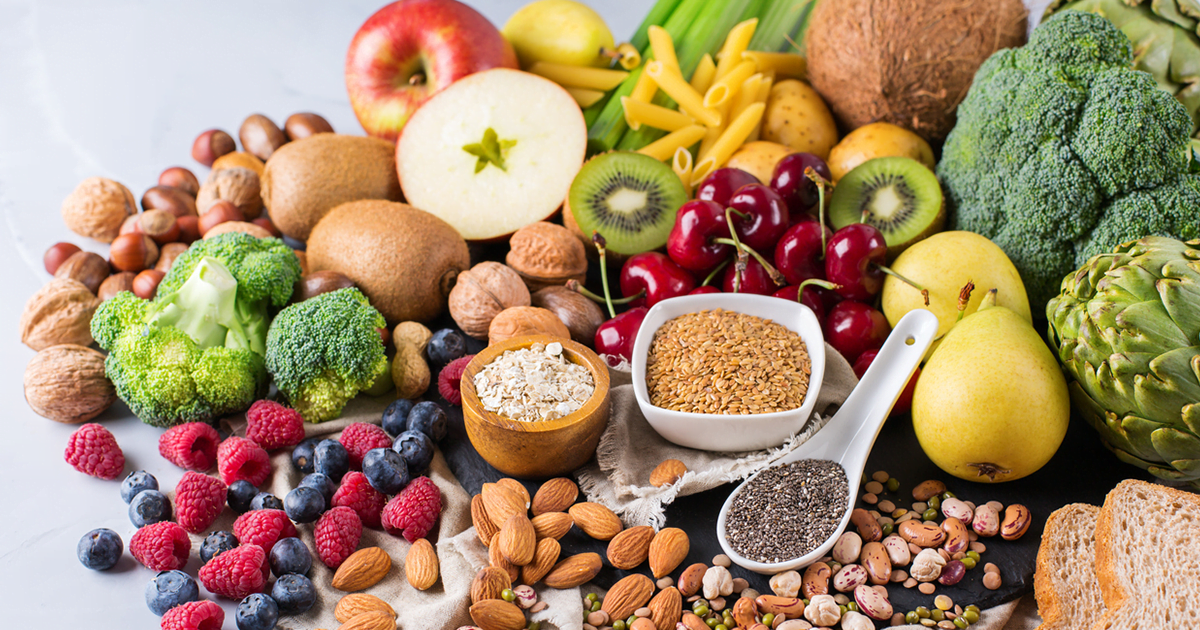
Insoluble fibres are foods that do not dissolve in water. These types of foods have a lot of bulk, so they can move things along through your digestive system more quickly!
- foods high in insoluble fibre include whole grains & vegetables
- foods high in insoluble fibre provide great health benefits for people on low carb diets
- increase satiety
- decrease food cravings
- improve diabetes control
- lower cholesterol levels
and much more.
Fast Facts on Soluble and Insoluble Fibre:
- Soluble and insoluble fibres are two types of fibre. Many fibre-rich meals include both.
- Both types of fibre have health advantages.
- Humans have been consuming fibre as a nutritional supplement since long ago.
- Getting enough fibre may be difficult in a society that focuses on refined carbohydrates, such as white bread, pasta, and sugar sweeteners.
Benefits of Foods in High Insoluble Fibre
A diet with foods high in insoluble fibre –
- Fibre softens stools, which helps them pass more easily. Foods high in insoluble fibre makes your stool heavier and larger, which aids in bowel regularity. A solid stool is easier to pass due to its weight and size. Fibre may assist in the formation of hard stools by absorbing water and adding bulk to faeces.
- It aids in the maintenance of healthy bowel function. A diet with foods high in insoluble fibre might help reduce your risk of developing haemorrhoids and small pouches in your colon (diverticular disease) and colorectal cancer. Fibre has also been proven to lower the incidence of colorectal cancer. Some fibre is metabolized by bacteria in the colon. The by-products of bacterial fermentation may help reduce and prevent cancerous changes in cells lining the colon (e.g., removing carcinogens).
- A high fibre diet also decreases your risk for cardiovascular disease, diabetes mellitus type II, obesity, and some gastrointestinal diseases such as colitis or diarrhoea.
- Insoluble fibre foods, such as wheat bran and whole-grain foods, are not broken down in the small intestine. Instead, they pass through to the large intestine intact, where bacteria ferment them into short-chain fatty acids that nourish your colon cells for optimal health.
Additional Benefits
- The soluble fibre in beans, oats, flaxseed, and oat bran has been shown to reduce total blood cholesterol levels by lowering low-density lipoprotein, or “bad,” cholesterol levels. High-fibre foods have also been linked to other heart health benefits such as lowering blood pressure and inflammation reduction.
- Helps to regulate blood sugar levels. Fibre, especially soluble fibre, may slow the absorption of sweets and help to improve blood sugar levels in people with diabetes. A nutritious diet including insoluble fibre may also lower the chance of getting type 2 diabetes.
- Fibre helps you maintain a healthy weight. Fibre-rich foods are more filling than fibre-poor meals, so you’ll likely eat less and stay fuller longer. High-fibre meals also tend to take longer to consume and be less “energy-dense,” which means they contain fewer calories for the same volume of food.
- Dietary fibre is associated with longer life. According to research, increasing your dietary fibre intake — especially cereal fibre. It lowers the risk of dying from cardiovascular disease and all cancers.
How Foods High in Insoluble Fibre Work
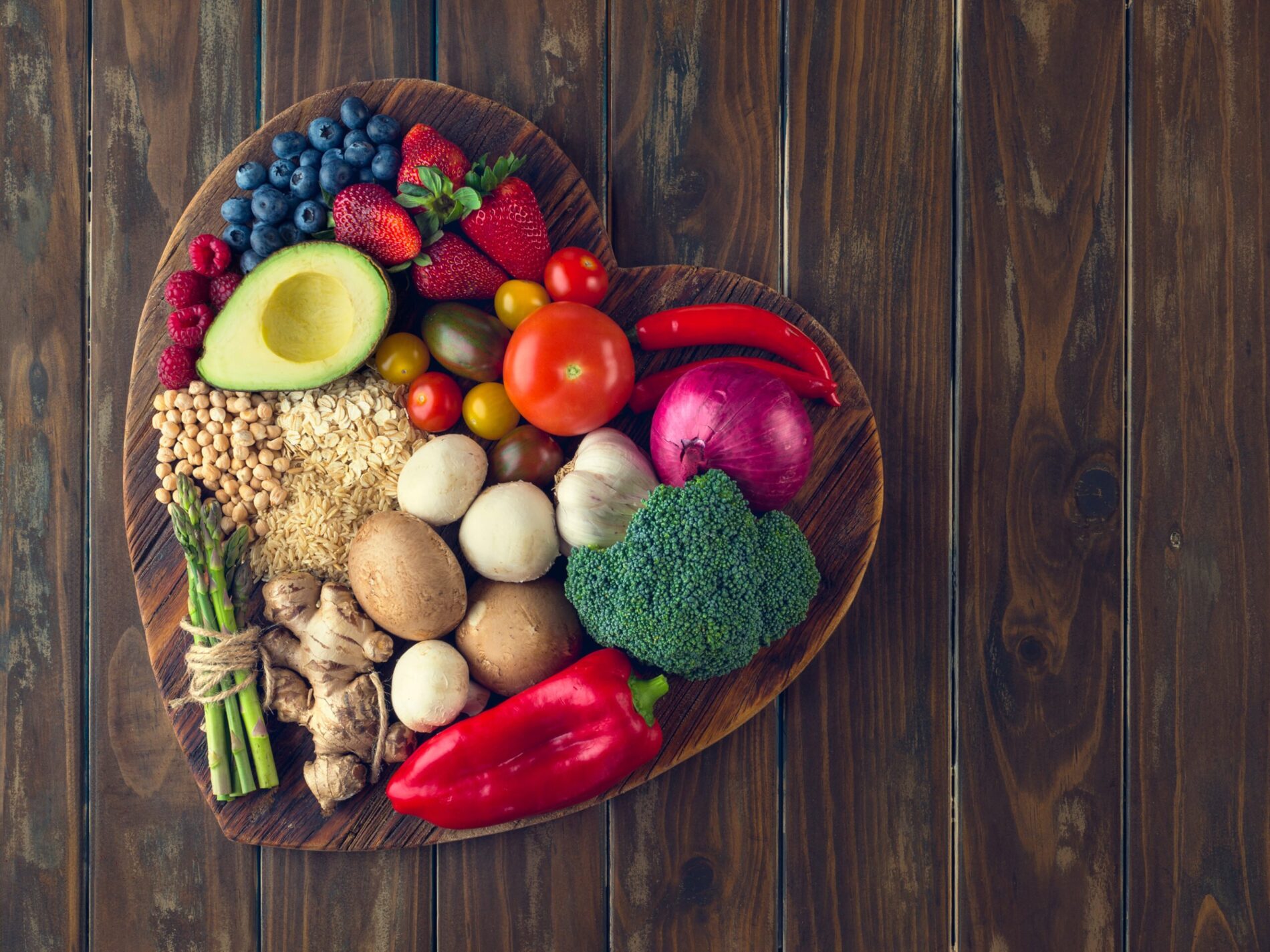
Fibrate fibres can help to keep blood sugar and fat levels steady after a meal by delaying the absorption of sugar and fat from meals, which may help to prevent post-meal spikes in blood sugar and fat.
Fibre also inhibits the absorption of some fat and cholesterol entirely, lowering blood triglyceride and cholesterol levels.
The term “indigestible fibre” is not entirely correct. Although we do not produce the enzymes needed to digest many of the fibres we consume in our diets, many of the bacteria that dwell in our intestines can break down, or ferment, fibres to the benefit of both species!
Bacteria in our intestines have vital health functions, including promoting nutrient absorption and function, immune function, and bowel function. As a result, it is critical to live with them while also assisting them in surviving so that we may benefit!
Fructooligosaccharides (FOS), also known as inulin, is an example of prebiotic fibre. Prebiotics are carbohydrates that feed the bacteria and allow them to grow and thrive.
Legumes, jicama, onions, and Jerusalem artichokes are all good sources of inulin.
Why Foods Rich in Fibre Is Necessary
Fibre is essential for proper detoxification in the body. Our bodies are always breaking down (metabolizing) extra hormones, medicines, manmade food components, and environmental pollutants.
The liver is where most of the detoxification takes place. The final products are frequently eliminated in the bile, a liquid substance developed in our bodies and secreted through the gall bladder into our digestive systems.
The fibre from our meals binds the chemicals in our food and allows us to eliminate these waste products when we eat a high-fibre diet. These pollutants can be reabsorbed, returned to the liver, and have to be processed again if there isn’t enough fibre in the diet. Requiring the liver to process these poisons consumes more energy and might lead to toxicity.
By Eating foods high in insoluble fibre, you can greatly improve your health! Start consuming more foods that are rich in this nutrient today to reap the benefits of a healthier lifestyle including greater heart health and healthy weight management.
Good Sources of Foods High in Insoluble Fibre
The amount of dietary fibre in each serving of the product is stated on the food packaging’s nutrition label.
The amount of soluble and insoluble fibre in grams (g) per serving must be listed under the dietary fibre heading if a product is marketed as high in fibre or has associated health advantages. Some producers may also choose to voluntarily provide the soluble and insoluble contents of the fibre component of their products.
The Fiber Content Claim is in use to indicate the amount of fibre in a product. The FDA specifies that foods containing at least 20% of the recommended daily value (DV) for fibre per serving are high in fibre. Foods with 5 per cent or less are considered low dietary fibre sources.
Foods High in Insoluble Fibre
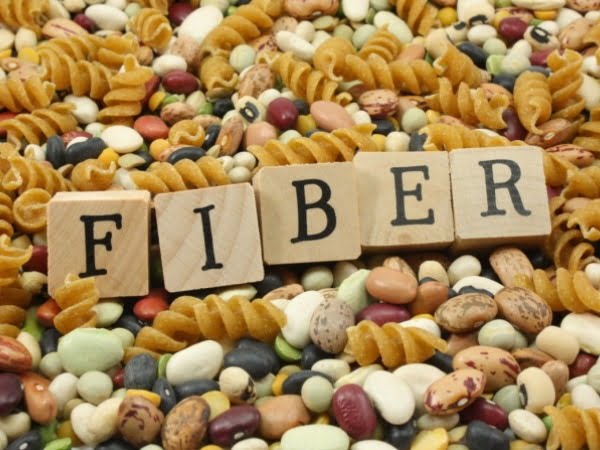
Beans, peas, and whole grains are high in fibre. Some fruits and vegetables are also highly fibre-containing. The Following Foods Are High In Fiber:
- cooked navy beans (1/2 cup contains 9.5 g)
- 100 per cent ready-to-eat bran (1/2 cup contains 8.8 g)
- canned kidney beans (1/2 cup contains 8.2 g)
- split peas cooked (1/2 cup contains 8.1 g)
- lentils cooked (1/2 cup contains 7.8 g)
- cooked pinto/black beans (1/2 cup contains 7.8/7.5 g)
- artichoke cooked (one whole artichoke contains 6.5 g)
- cooked white beans/chickpeas/great northern beans (1/2 cup contains 6.3-6.2 g)
- mature soybeans (1/2 cup cooked contains 5.2 g)
- plain rye wafers or crackers (2 crackers contain 5.0 g)
- baked sweet potato with the peel (1 medium potato contains 4.8 g)
- raw pear or Asian pear (1 small pear contains 4.3-4.4 g)
- cooked green peas (1/2 cup contains 4.4 g)
Some More Foods High in Insoluble Fibre
- whole-wheat English muffin/bread (1 muffin or 2 slices contains 4.4 g)
- cooked bulgur wheat (1/2 cup contains 4.1 g)
- raw raspberries (1/2 cup contains 4.0 g)
- boiled sweet potato without the peel (1 medium potato contains 3.9 g)
- baked potato with the peel (1 medium potato contains 3.8 g)
- stewed prunes (1/2 cup contains 3.8 g)
- dried figs or dates (1/2 cup contains 3.7-3.8 g)
- raw oat bran (1/2 cup contains 3.6 g)
- canned pumpkin (1/2 cup contains 3.6 g)
- cooked spinach (1/2 cup contains 3.5 g)
- shredded ready-to-eat wheat cereals (1 ounce contains 2.8-3.4 g)
- raw almonds (1 oz. contains 3.3 g)
- raw apple with the skin (1 medium apple includes 3.3 g)
- cooked whole-wheat spaghetti (1/2 cup contains 3.1 g)
- raw banana or orange (1 fruit contains 3.1 g)
Both soluble and insoluble fibres are in need in a nutritious diet. Soluble fibres are more typical in meals like beans, peas, oats, barley, apples, and citrus fruits. Beans, whole wheat or bran items, green beans, potatoes, cauliflowers, and nuts are all good sources of insoluble fibre.
While there are many different types of fibre supplements on the market, most do not include all of the vitamins and minerals found in fibre-rich meals, such as vitamin B and iron. Supplements may also be difficult to absorb by the body or absorbed at all.
Picking Foods High In Insoluble Fibre
When buying or cooking meals, it is beneficial to keep a few fundamental rules in mind. The following are some excellent fibre-intake suggestions:
- Picking products that have whole grains close to the start of their ingredients list.
- Choosing foods naturally rich in fibre over supplements, such as Metamucil, Citrucel, and others.
- Eating beans, peas, or lentils daily.
- Eating at least one food daily that contains 20 per cent DV per serving.
- Consuming fruits and vegetables with their skins or peels intact when possible.
- Looking up the best way to eat specific foods. The amount of dietary fibre in many foods changes, depending on whether they are raw, cooked, stewed, steamed, fried, or baked.
- Picking unrefined grain and cereal products to include regularly in a diet.
- Picking whole fruits and vegetables rather than juices.
- Adding beans, peas, and lentils to soups and salads
- Adding more beans, peas, or lentils than meat, or making them the main ingredient when preparing pasta dishes, casseroles, or stir-fry.
- Making dips or spreads out of chickpeas, beans, peas, lentils, and other pulses.
- Eating unsalted nuts, seeds, or dried fruits as snacks, or sprinkling them over cereals, salads, or yoghurt.
- Start the day with whole-grain breakfast options, especially 100 per cent ready-to-eat bran.
- Picking brown rice above the white variety.
How Many Foods High In Insoluble Fibre Do You Need
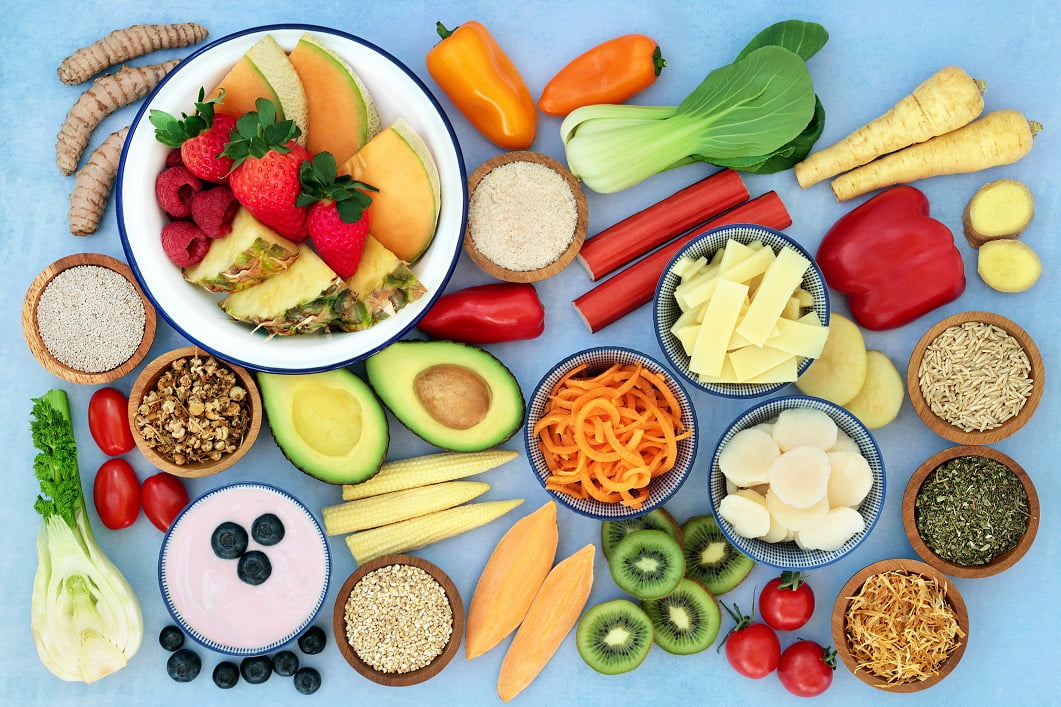
According to the Dietary Guidelines for Americans, which are jointly produced by the US Departments of Agriculture and Health and Human Services, over 90% of women and 97% of men do not obtain adequate quantities of dietary fibre. This is due to a lack of fruit, vegetables, and whole grains in most people’s diets.
The suggested daily intake varies by sex and age:
Women
- Age – 19 to 30: 28 grams
- Ages 31-50: 25 grams
- Ages – 51+: 22 grams
Men
- Ages 19 to 30: 34 grams
- Age – 31-50: 31 grams
- Ages 51+: 28 grams
Conclusion
To get the most health benefits from insoluble fibre, you should aim for at least 4 servings per day. However, it’s equally important to make sure that your diet is balanced and varied to avoid nutrient deficiencies and other problems like constipation or gas. If you’re not sure how much of each type of dietary fibre you need to eat daily, we can help! We’ve created an easy-to-use infographic that outlines all the different types of fibres, as well as their recommended intake, and amounts so check it out if this sounds interesting. It’s never been easier than now to incorporate more insoluble fibre into your life without feeling deprived thanks to our extensive list of recipes with high soluble fibre content available on our blog.
If you are facing diabetes-related issues, MantraCare is here to help. Book your free trial online diabetes consultation session now to connect with a specialist diabetologist.
